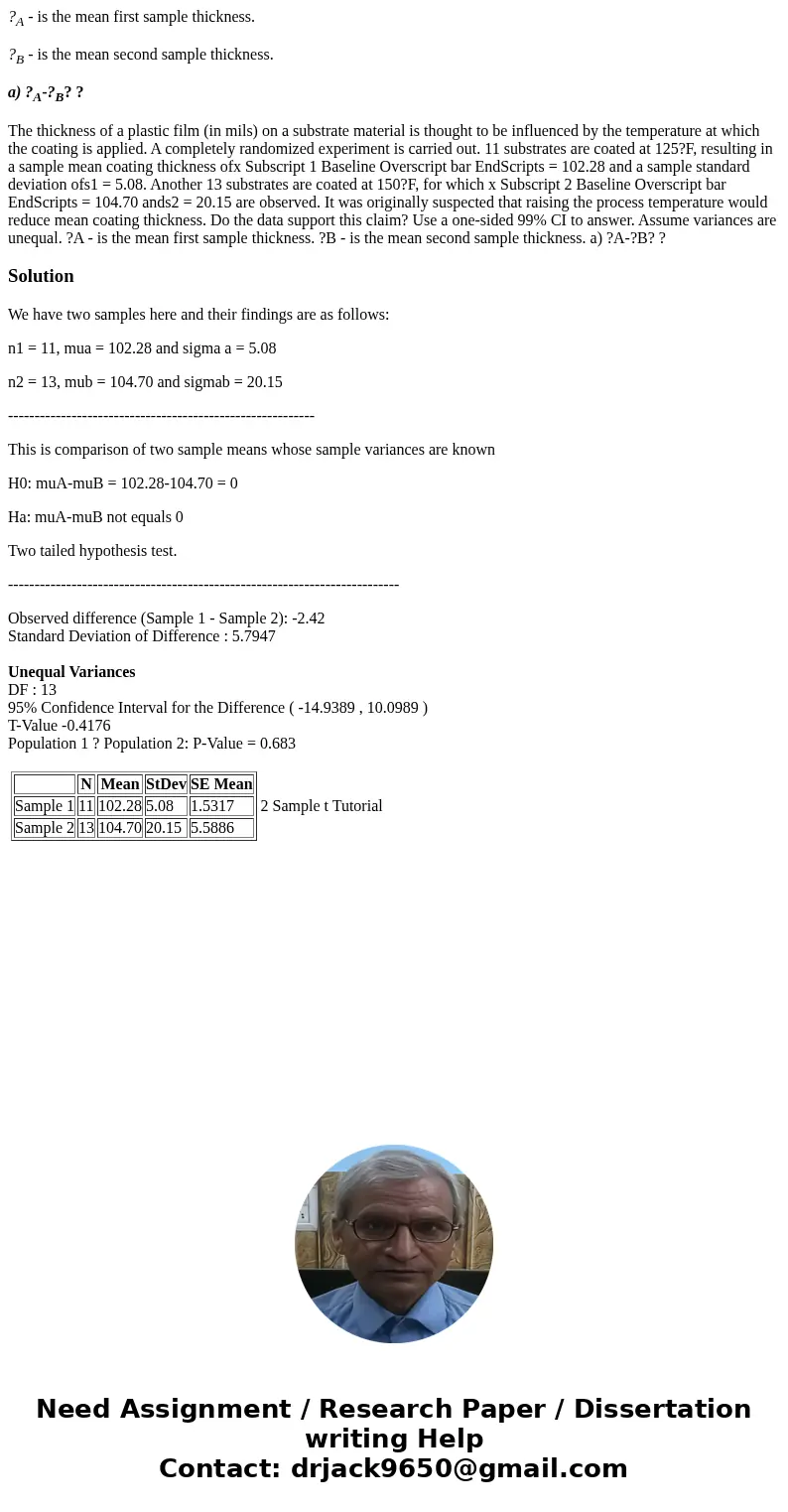A is the mean first sample thickness B is the mean second
?A - is the mean first sample thickness.
?B - is the mean second sample thickness.
a) ?A-?B? ?
The thickness of a plastic film (in mils) on a substrate material is thought to be influenced by the temperature at which the coating is applied. A completely randomized experiment is carried out. 11 substrates are coated at 125?F, resulting in a sample mean coating thickness ofx Subscript 1 Baseline Overscript bar EndScripts = 102.28 and a sample standard deviation ofs1 = 5.08. Another 13 substrates are coated at 150?F, for which x Subscript 2 Baseline Overscript bar EndScripts = 104.70 ands2 = 20.15 are observed. It was originally suspected that raising the process temperature would reduce mean coating thickness. Do the data support this claim? Use a one-sided 99% CI to answer. Assume variances are unequal. ?A - is the mean first sample thickness. ?B - is the mean second sample thickness. a) ?A-?B? ?Solution
We have two samples here and their findings are as follows:
n1 = 11, mua = 102.28 and sigma a = 5.08
n2 = 13, mub = 104.70 and sigmab = 20.15
----------------------------------------------------------
This is comparison of two sample means whose sample variances are known
H0: muA-muB = 102.28-104.70 = 0
Ha: muA-muB not equals 0
Two tailed hypothesis test.
--------------------------------------------------------------------------
Observed difference (Sample 1 - Sample 2): -2.42
Standard Deviation of Difference : 5.7947
Unequal Variances
DF : 13
95% Confidence Interval for the Difference ( -14.9389 , 10.0989 )
T-Value -0.4176
Population 1 ? Population 2: P-Value = 0.683
| 2 Sample t Tutorial |

 Homework Sourse
Homework Sourse